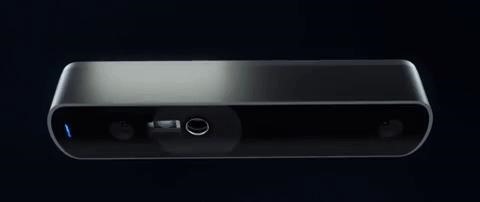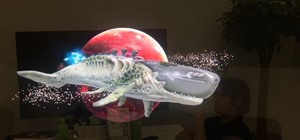Occipital's initial augmented reality module, the Structure Sensor, gave iPhones and iPads the depth-sensing abilities of the HoloLens. Now, the company's latest product promises to do the same for Android devices, as well as augmented reality and virtual reality headsets and other devices.
On Thursday, the company announced Structure Core, a depth sensor that encapsulates optics for environmental mapping and an inertial measurement unit (IMU) sensor for six degrees of freedom (6DoF) tracking. The company's previously released Structure Sensor relied on the camera and inertia sensors built into iPhones and iPads.
- Don't Miss: Occipital Acquires Paracosm in a Bid to Transform Even the Largest Structures into Virtual 3D Objects
"Structure Core basically makes it possible to bolt spatial awareness into any project," Jeff Powers, CEO and co-founder of Occipital (and NR30 member, told Next Reality. "You could take an off-the-shelf AR display and give it similar vision features to what you'd find in a Hololens. Or build mapping and navigation into a robot without needing to raise millions in capital to pull it off."

With Structure Core, companies looking to sell augmented reality or virtual reality headsets can avoid spending some of the research dollars that Microsoft and Magic Leap spent on development for spatial awareness technology powering devices like the HoloLens and Magic Leap One, respectively. One of those companies, Kura, participated in Occipital's beta phase release for the product.
"The global shutter is pretty important for us because we get a whole frame all together, and this really helps on the feature tracking and also the environmental mesh interactions," said Kelly Peng, CEO of Kura AR, in a video testimonial provided to Next Reality.
Structure Core packs a pair of infrared cameras, a laser projector, and the option of a wide-range visible camera capable of 160 degrees diagonal field of view and better tracking, or an RGB camera that sacrifices field of view (85 degrees diagonal) for the ability to capture color images along with color+depth images. The module also has a USB 3.0 (Type C) port for fast, low-latency data transfer between sensor and host.

While Occipital has designed a sleek enclosure for its Structure Sensor, customers can opt for a caseless module for easier integration into their products.
With support for Linux, Windows, Android, and macOS via SDK, Structure Core can adapt to a wide range of use cases beyond AR headsets, including robotics and drones. Structure Core buyers will also have the option to integrate Occipital's Perception Engine for 6DoF tracking.
AR headset manufacturers face a complex equation when it comes to components, from optical displays and environmental sensors, to processing power and battery capacity, and even general aesthetics and content, all in a bid to appeal to consumers. Structure Core might help them solve at least one part of that complicated puzzle.
Just updated your iPhone? You'll find new features for Podcasts, News, Books, and TV, as well as important security improvements and fresh wallpapers. Find out what's new and changed on your iPhone with the iOS 17.5 update.
























Be the First to Comment
Share Your Thoughts